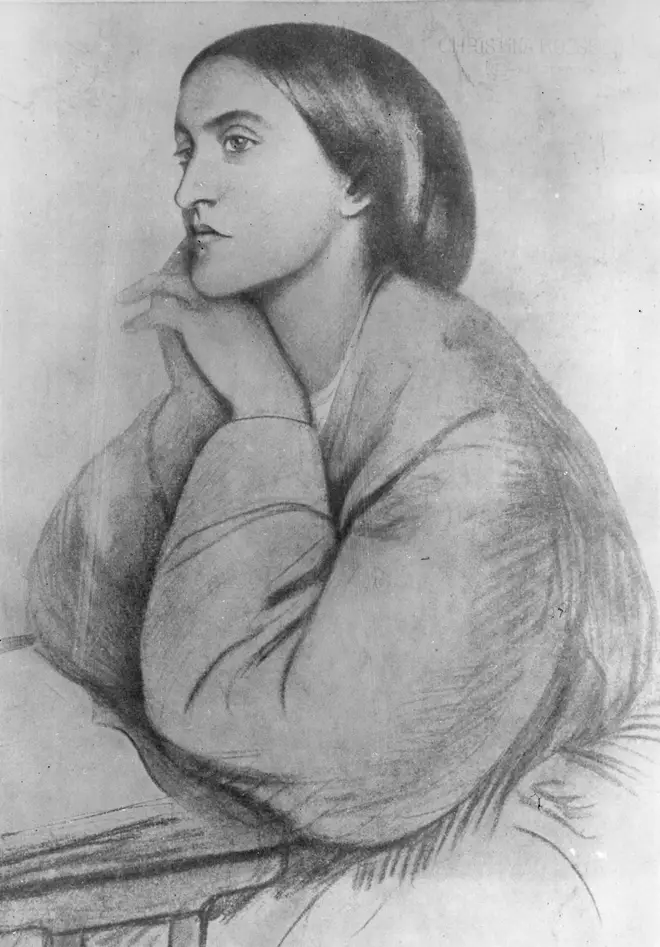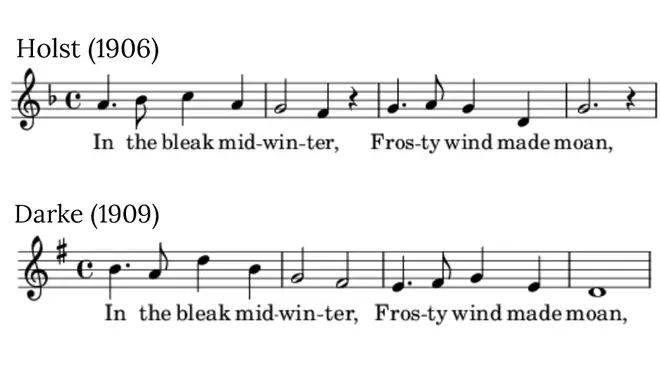On Air Now
Relaxing Evenings with Zeb Soanes 7pm - 10pm
1 December 2020, 09:48
From the ongoing Holst vs. Darke battle (it’s Darke, OK guys?) to the lyrics, here’s everything you need to know about the traditional carol ‘In The Bleak Midwinter’.
‘In The Bleak Midwinter’ has been a staple of British Christmas carol services for decades.
The carol is based on a poem entitled ‘A Christmas Carol’ by English poet Christina Rossetti. The poem was first published in January 1872.
It wasn’t until 1906 that the poem was set to music. Rossetti’s words were set to a melody composed by Gustav Holst, and it was published under the title ‘In The Bleak Midwinter’ in The English Hymnal.
Read more: The 30 greatest Christmas carols of all time >
In the bleak mid-winter
Frosty wind made moan;
Earth stood hard as iron,
Water like a stone;
Snow had fallen, snow on snow,
Snow on snow,
In the bleak mid-winter
Long ago.
Our God, heaven cannot hold Him
Nor earth sustain,
Heaven and earth shall flee away
When He comes to reign:
In the bleak mid-winter
A stable-place sufficed
The Lord God Almighty —
Jesus Christ.
Enough for Him, whom Cherubim
Worship night and day,
A breastful of milk
And a mangerful of hay;
Enough for Him, whom Angels
Fall down before,
The ox and ass and camel
Which adore.
Angels and Archangels
May have gathered there,
Cherubim and seraphim
Thronged the air;
But only His Mother
In her maiden bliss
Worshipped the Beloved
With a kiss.
What can I give Him,
Poor as I am?
If I were a Shepherd
I would bring a lamb;
If I were a Wise Man
I would do my part,
Yet what I can I give Him,
Give my heart.

The perennial carol is a stark contrast to most other Christmas songs, being simple and sombre in tone. It focuses on the birth of Jesus Christ, and features many images we associate with the nativity; the manger, a stable, angels, livestock and the Wise Men.
The meaning of the words lie in their humble simplicity – the stable stood in a bleak midwinter's night is 'enough' for the baby Jesus. This carol doesn't shout from the rooftops about Christmas cheer; instead, it focuses on the simplest yet truest gift of all, love.
It was Holst who wrote the original setting for the text, but Edwin Darke followed shortly after in 1909 with a musical setting of his own.
Both versions use similar rhythmic patterns, although Holst's setting is simpler than Darke's. The irregular measure of the poem also means that the melody has to be varied to fit the lyrics.
Read more: What are the original lyrics to ‘O Holy Night’ – and who has recorded it? >

Darke, on the other hand, treats each verse differently and his version includes solos for soprano and tenor. He also repeats the final line of each verse.
Cathedral choirs tend to favour this version, especially as it is the setting sung by the King's College Choir in their annual broadcast of Nine Lessons and Carols.
In 2008, Darke's setting was voted by leading choirmasters and choral experts as the best Christmas carol.
The original poem was recited in Season Four of Peaky Blinders, set shortly after the end of World War One. The carol was a popular Christmas choice during WWI, especially among soldiers. It has also featured in an episode of Dr. Who.
Numerous singers have covered the carol, including Annie Lennox, Cyndi Lauper and Renée Fleming and Rufus Wainwright, who turned it into a surprisingly delightful duet.

Renée Fleming - In The Bleak Midwinter (with Rufus Wainwright)
We’ve opened the Nation’s Favourite Carol for 2020! Vote for your favourite Christmas carol, and you could win a Fortnum & Mason Hamper.